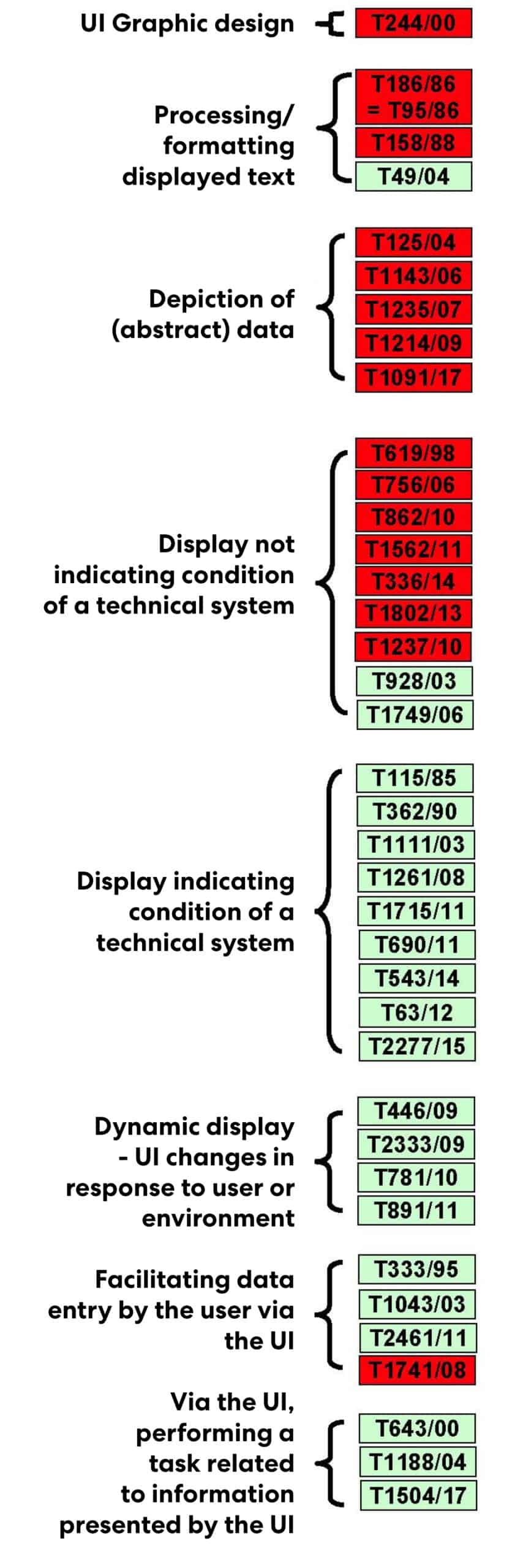
Different EPO Board of Appeal decisions have taken different directions with regard to what, in relation to developments concerning graphical user interfaces, might be considered to be sufficiently “technical” to support patentability. An overview of cases that have taken different directions may be helpful. As one possibility, different directions are represented here by 38 cases which spread over more than 30 years – from T115/85 decided in 1988, to T2255/17 decided in 2020. In “green” cases it was found explicitly or, in some few cases, implicitly that the user interface (GUI) developments were sufficiently “technical”. In “red” cases it was found that the developments were “non-technical” or insufficiently “technical”.
The 38 cases are arranged in terms of different types of asserted aims or effects of the GUI developments, extending from (at the top) concern with screen display per se – UI graphic design – to cases (at the bottom) concerned with involvement of the GUI in performance of some (technical?) task involving the system on which the GUI is run, or involving something controlled by that system.
There is an established pattern of which types are more or less likely to be considered to be sufficiently “technical” to support patentability, but a handful of cases appear to be “outliers”, out of the mainstream of decisions: T49/04, T928/03, T1749/06 (all “green”) and T1741/08 (“red”).
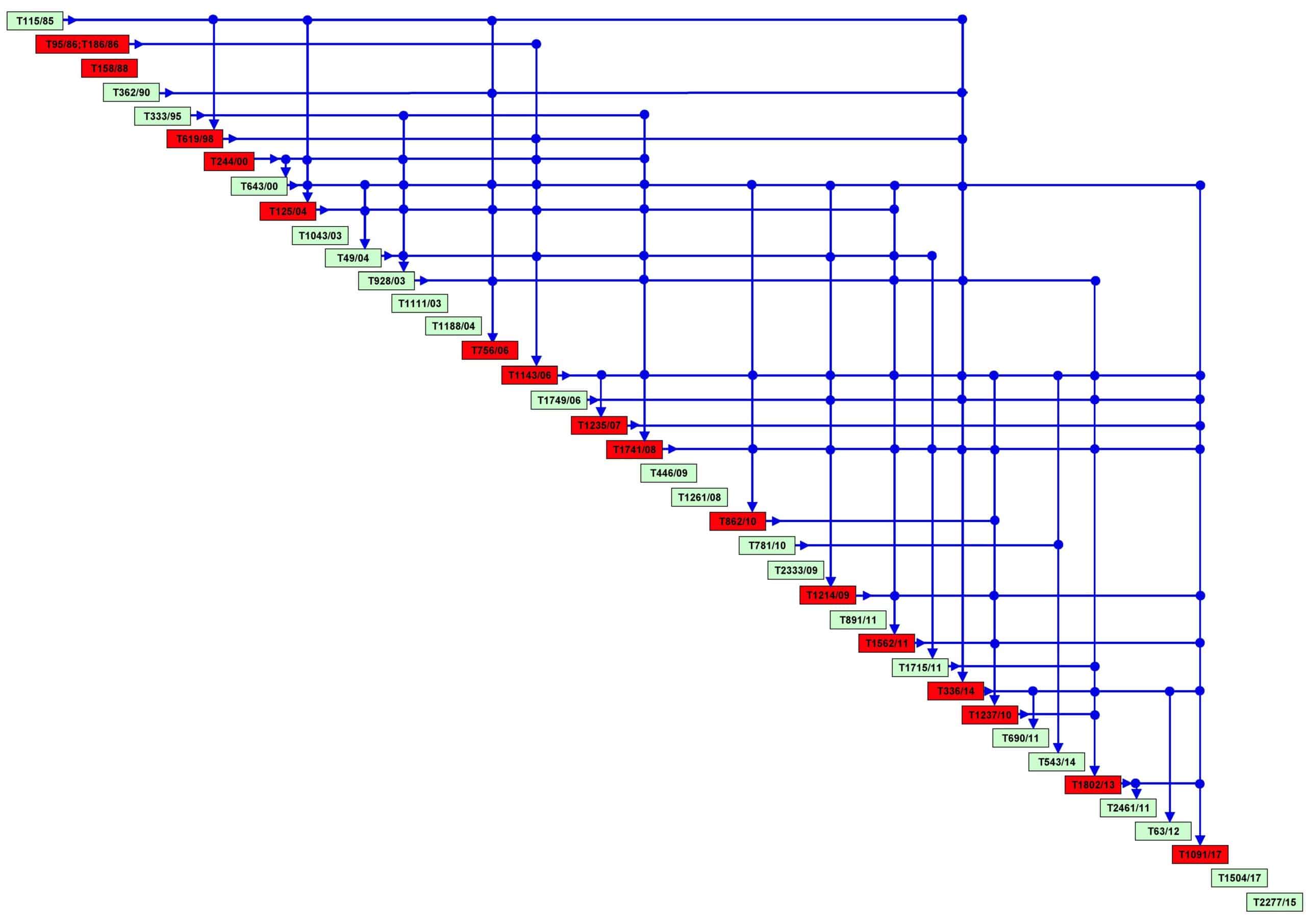 Individual decisions may be related by references to earlier decisions as support for reasoning applied, or to distinguish from reasoning in earlier decisions. As one illustration of this, the 38 cases are here arranged on a track from earliest (top left) to latest (bottom right). 10 cases on the track, including the two most recent cases, stand alone but there are cross-references between 28 cases on the track which are indicated by points (●) on the grid above the track. For example it can be seen that the earliest case T115/85 is cited (►) by 4 later cases on the track (T619/98, T125/04, T756/06, T336/14) and one of the latest cases on the track T1091/17 cites (▼) 8 earlier cases on the track.
Individual decisions may be related by references to earlier decisions as support for reasoning applied, or to distinguish from reasoning in earlier decisions. As one illustration of this, the 38 cases are here arranged on a track from earliest (top left) to latest (bottom right). 10 cases on the track, including the two most recent cases, stand alone but there are cross-references between 28 cases on the track which are indicated by points (●) on the grid above the track. For example it can be seen that the earliest case T115/85 is cited (►) by 4 later cases on the track (T619/98, T125/04, T756/06, T336/14) and one of the latest cases on the track T1091/17 cites (▼) 8 earlier cases on the track.
At least for earlier cases, the number of times they are cited by other cases on the track may be some indication of how “influential” they have been for UI case law. For example, T643/00 is a “green” case which is cited by 11 other cases on the track, of which 9 are “red”. T49/04 is a “green” case cited by 6 other cases, of which 4 are “red”. T928/03 is a “green” case which is cited by 5 other cases, all “red”. T643/00, T49/04 and T928/03 may have been “influential” mainly in the sense that in the “red” cases the Boards of Appeal concerned sought to distinguish from them. T1143/06 is a “red” case which is cited by 10 other “red” cases but only 1 “green” case. T1741/08, another “red” case, is cited by 7 “red” cases and 1 “green” case. The “red” cases T1143/06 and T1741/08 may be considered “influential” in that Boards of Appeal in other cases have in the main sought to follow them.
The cases here, and their relationships, could be an initial aid in understanding, in prosecution of an application or opposition, possible arguments for or against a UI development being sufficiently “technical” to support patentability (though the UI development might still face problems with the prior art).
The “Case Law of the Boards of Appeal” is a vital reference source, as is the present version of the Guidelines for examination at the EPO. The latter includes sections on user interfaces (G-II-3.7.1) and presentations of information (G-II-3.7).
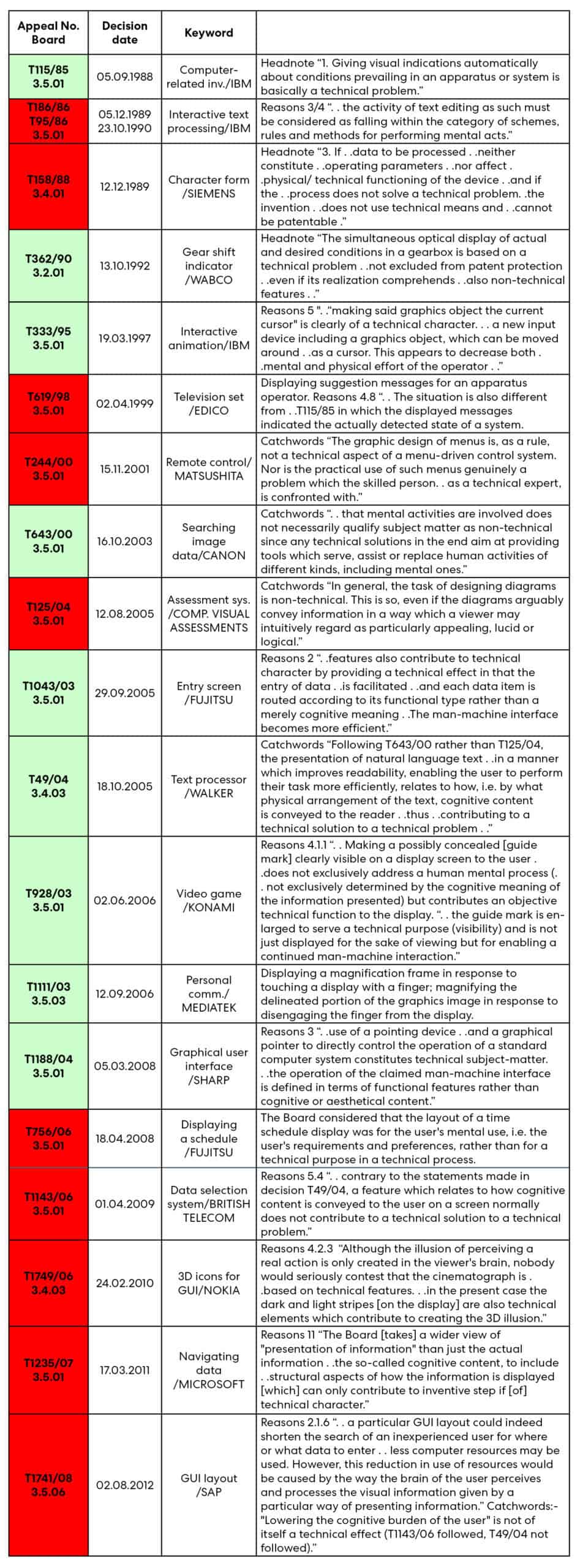
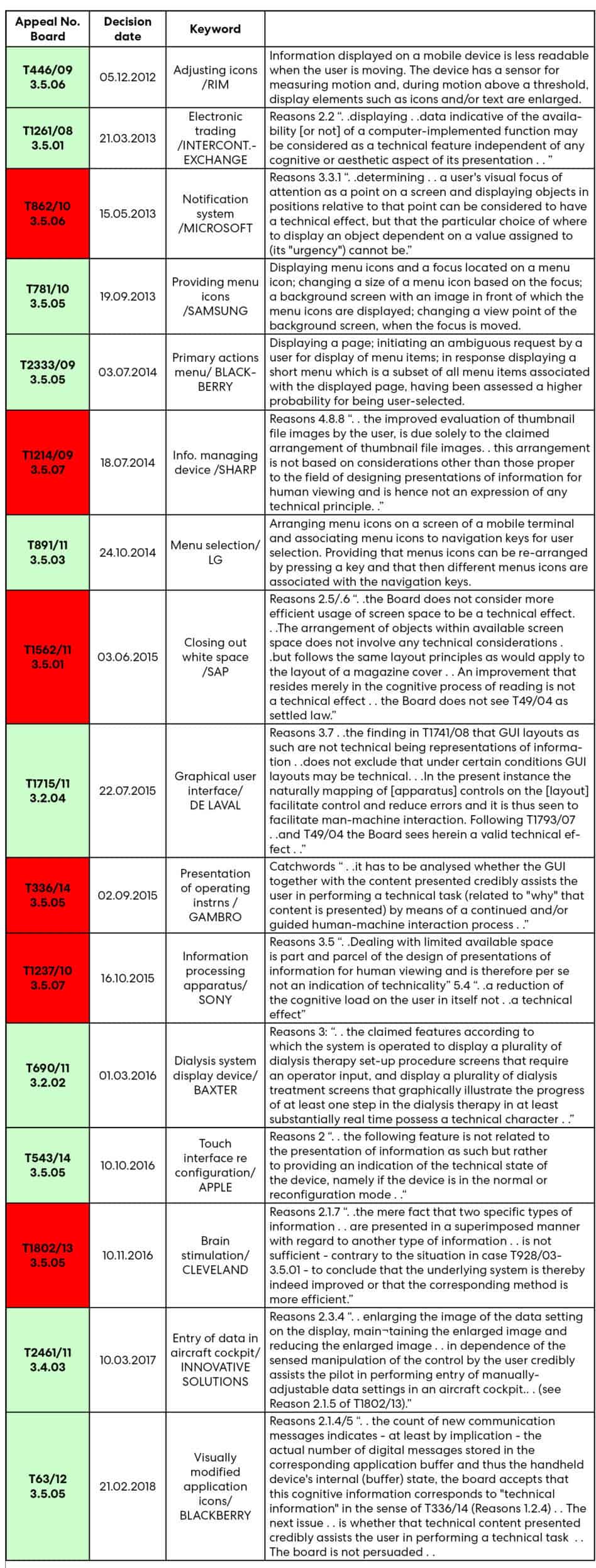
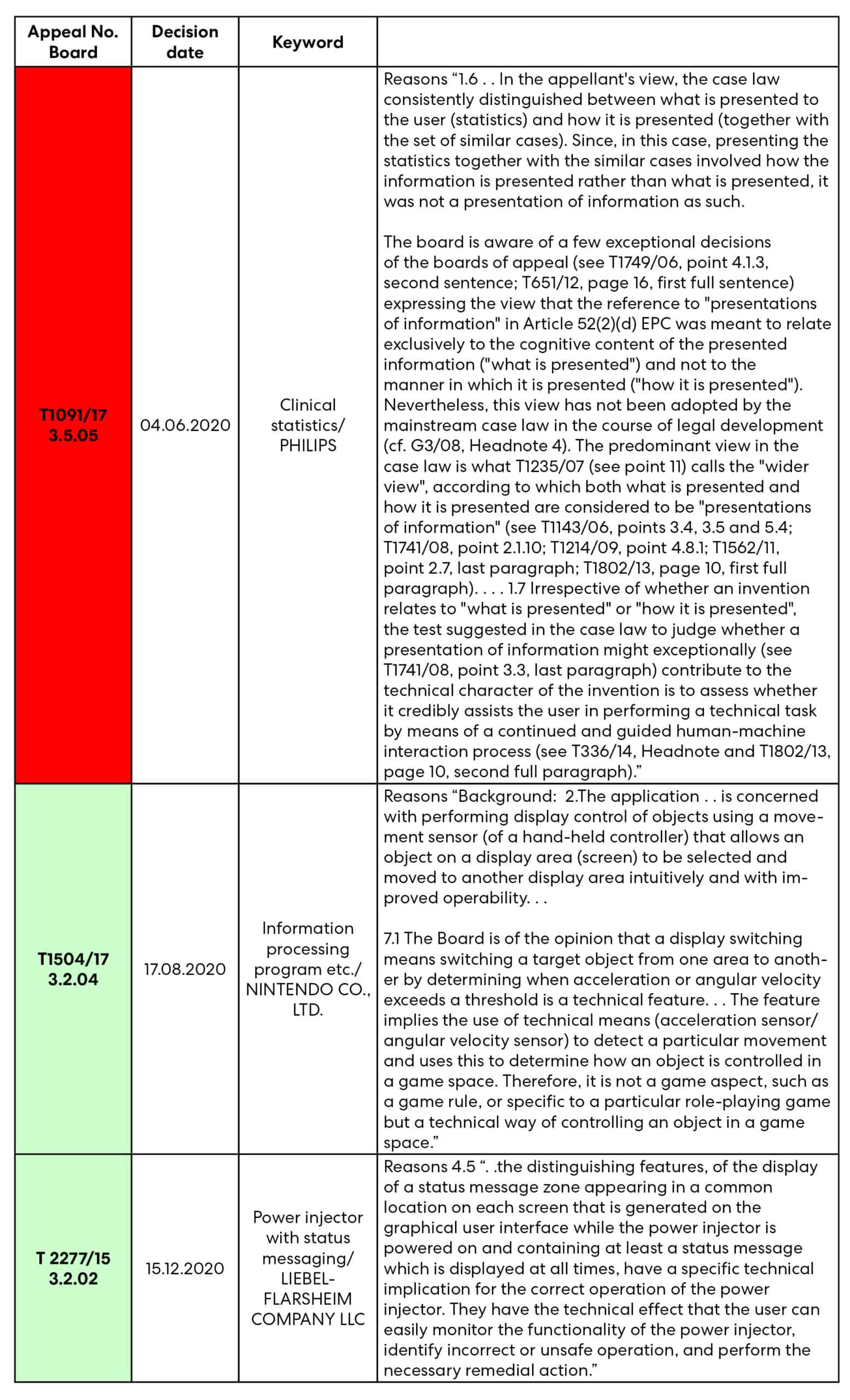
This is for general information only and does not constitute legal advice. Should you require advice on this or any other topic then please contact hlk@hlk-ip.com or your usual Haseltine Lake Kempner advisor.